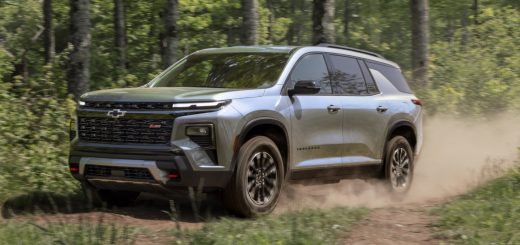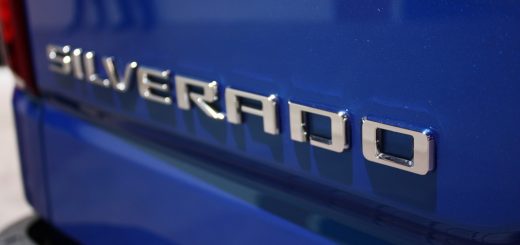Speaking at at the 2013 IHS CERAWeek energy conference earlier this week, General Motors CEO Dan Akerson described a way in which the automaker is taking a unique approach to developing electric vehicles by working on technologies concurrently in an effort to see which one ends up being best.
“We’re actually developing a car today which is really anathema to the way the auto industry works,” said Akerson. “We’re running a dual play on the technology to see which one will succeed. One will result in a 100-mile range”, the other will be a 200-mile range.”
An electric vehicle with a 200-mile range is more than twice that achieved by the automaker’s currently only pure-electric vehicle, the Chevrolet Spark EV. We should also note that GM also has a fleet of electric Chevrolet Cruzen prototypes floating around Korea… but nothing has been said about that effort in at least a year.
The GM Authority Take
Nice to know that The General isn’t putting its eggs all in one (Voltec) basket.















Comments
Smart to hedge the bet. This is a game no company can afford to lose.
Now how about perfecting the Hybrid system…
@yaba The more I think about it, the more I come to the realization that hybrids are already last-generation technology compared to Voltec. In that regard, GM has already perfected hybrids with Voltec, so I’d rather see them focus on lowering the price of Voltec-powered offerings than on developing a last-gen tech, while developing the next-gen all-electric tech.
I’ve described the EV market elsewhere as: ” a dartboard where the
competitors are missing the bullseye and hitting the wall “. This is due
to the flood of existing-model EV versions pouring out in response to
Obama’s reelection and the maintaining ( for now ) the strict C.A.F.E.
mandates for a few more years. These “compliance cars”, or EVs with
battery packs stuffed into existing subcompact bodies allowing 70-90
miles range at car prices reaching $40,000+.
Some people proclaim: “Nobody wants these cars”, and they are
partially right. Nobody wants to dish out $40grand on a city car for
getting groceries that seats 4, while looking like everybody else’s
Focus, Fit or Golf. GM looks to be taking aim at the EV dartboard
to get closer to the center than the somewhat ridiculous SparkEV.
PHEVs like C-Max Energi or EREVs like Volt are much closer to
the true target of what people need for their everyday cars. Tesla
already has 240 mile range cars – and it’s huge companies like
GM that can mass-produce them to get the price down to Accord,
Camry, Fusion and Altima levels. These new cars need a generator
or renge-extender if their electric propulsion can only deliver 100-
200 miles. With these projections, Akerson seems to be undermining
EVs entirely. By now — by observing Volt owners and gauging Prius’
success, we have a very clear picture of what it takes to succeed in
gasless rides. The two-pronged attack should be hybrids and PHEVs.
These are stepping stones to future BEVs ( pure electrics ) with ranges
of 300 miles and more.
Hybrids like Toyota and Ford’s HSD work – while GM’s 2-mode flopped.
GM needs a hybrid and I’ve been told they actually have one
that was in development but was axed. Even if GM licensed HSD from
Toyota while they developed their own, they’d be ahead. I think this
announcement smells like smoke and mirrors. A pure EV with less than
200 ( REAL MILES ) range is just not going to float. 200 miles is just
the minimum threshold of buyer interest, and if that 200 mile car costs
$45,000+ – forget it – it’s sunk before it ever floats.
EV’s fail because they are ugly, seat four, straddle classes (C & D segment) & are purchased by people wishing to make a political statement whilst driving. If they was based on a regular petrol & diesel model looking no different to the rest of the range they may appeal to a larger audience, if not the currant attention seeking political green lobby.
I can’t hear you all the way back in 70’s.
Political statement Image my ass; I don’t want to pay for gas anymore. Period.
You are partially correct, right now.
Think back to the first generation prius, which I still own(240k+ miles, still going strong), it is ugly, effectively seats 4, is between the sub-compact and compact segment in size, expensive and was mostly purchased by greenies in California.
Now look at the 2004 Prius, just 7 years later, Toyota came out with a car that looks good, seats 5, is firmly in the compact class, actually has more room due to the hatch, is affordable, and is now primarily purchased by people who want to save money on gas. I average 45mpg on the first gen, most average 50mpg on the second.
As for the political green lobby, it exists, but more as a joke than as a effective lobby that greatly influences policy.
Current EV’s are not very practical and cannot succeed as currently made, but EVs aren’t about right now, Tesla has a car that goes 200+ miles in 2013, what can it accomplish in 2020?
@Jon I’ve a few points to contend here.
Some EVs are ugly. Not the case with the Volt/Ampera, Focus EV, or offerings from Tesla or Fisker. As more are introduced, you can bet that they won’t be ugly at all. This is more of a learning curve scenario, as designers learn to style the cars in such a way that provides a combination of 1) superior aerodynamics, 2) great design, and 3) sufficient layout (battery pack placement, etc). While some have already figured out how to make such vehicles look good, others haven’t (Nissan).
Some EVs seat four… others seat more. This is, just like the styling, a matter of learning from doing — and will be less and less of a factor going forward.
The segment stuff isn’t at all important to end buyers as much as it is to enthusiasts (such as ourselves). Segments exist to define specifications and provide a common ground for comparisons (specs, pricing, features, etc.). Mainstream consumers (the “larger audience”) aren’t readily familiar with such classes, and won’t make a decision to buy or not buy based on a vehicle’s size class… especially when the class is so close (C vs. D). They’ll make a decision about whether or not the car fits their needs as it relates to size, fuel economy/electric efficiency, etc.
Of course, there’s nothing as great as a V8, even though most consumers drive vehicles with smaller engines… but electric cars can provide much more than a political statement. The biggest of these is the ability to not pay for gas, ever again. And until one has experience such an experience, that’s a difficult statement to digest.
Coincidentally, the Volt/Ampera is an EV (EREV) that’s “based on a regular petrol & diesel model looking no different to the rest of the range” — even though it looks vastly different than the Cruze. But EVs are much more than you describe… and will only get better from here.
It’s loosely like how back in the day Pontiac, Chev, Olds, and Buick all had their own V8 variant and it was sort of an internal competition between brands.
More on Peugeot’s hybrid air system (that GM could/should adopt):
http://sportstoday.us/cars_motorbikes/batteries-not-included-%E2%80%93-psa%E2%80%99s-hybrid-air-system-.aspx